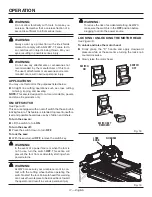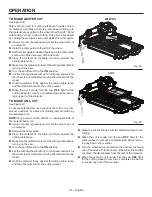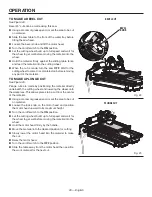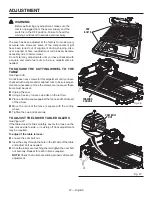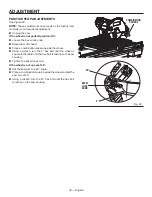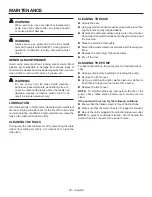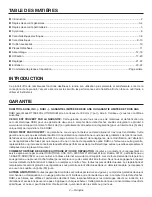
19 — English
OPERATION
TO MAKE A MITER CUT
See Figure 22.
Miter cuts are used for cutting outside and inside corners
on material, decorative chair rail, and base molding with
the material at any angle to the wheel other than 90°. Miter
cuts tend to “creep” during cutting. This can be controlled
by holding the workpiece securely against the miter guide.
Using a marker or grease pencil, mark the area to be cut
on material.
Install the miter guide to the left of the wheel.
Set the miter guide to desired angle using the miter guide
scale, and tighten securely with lock knob.
Place the material on the table and firmly against the
sliding table fence.
Make sure the material is clear of the cutting wheel before
turning on the saw.
Turn the on/off switch to the
ON
position.
Let the cutting wheel build up to full speed and wait for
the wheel to get wet before moving the material into the
wheel.
Hold the material firmly against the sliding table fence
and feed the material into the cutting wheel.
When the cut is made, turn the saw
OFF
. Wait for the
cutting wheel to come to a complete stop before remov-
ing any part of the material.
TO MAKE AN L-CUT
See Figure 23.
L-cuts are cuts that remove a piece of tile to fit in a corner,
around a cabinet, or a piece of molding and are made by
two separate cuts.
NOTE:
Only overcut on the bottom or underneath side of
the material being cut.
Using a marker or grease pencil, mark the area to be cut
on material.
Remove the miter guide.
Place the material on the table and firmly against the
sliding table fence.
Make sure the material is clear of the cutting wheel before
turning on the saw.
Turn the on/off switch to the
ON
position.
Let the cutting wheel build up to full speed and wait for
the wheel to get wet before moving the material into the
wheel.
Hold the material firmly against the sliding table fence
and feed the material into the cutting wheel.
MITER CUT
Fig. 22
L-CUT
Fig. 23
Make the cut far enough into the material without over-
cutting.
When the cut is made, turn the saw
OFF
. Wait for the
cutting wheel to come to a complete stop before remov-
ing any part of the material.
Turn the material over and make the second cut along
one of the marks. This time overcut the other line and the
cut piece should separate from the rest of the material.
When the second cut is made, turn the saw
OFF
. Wait
for the cutting wheel to come to a complete stop before
removing any part of the material.
Summary of Contents for DT180EVO
Page 71: ...25 NOTES NOTAS ...













